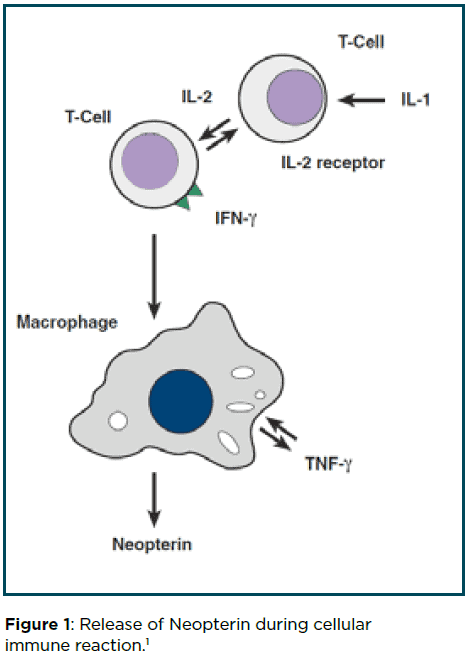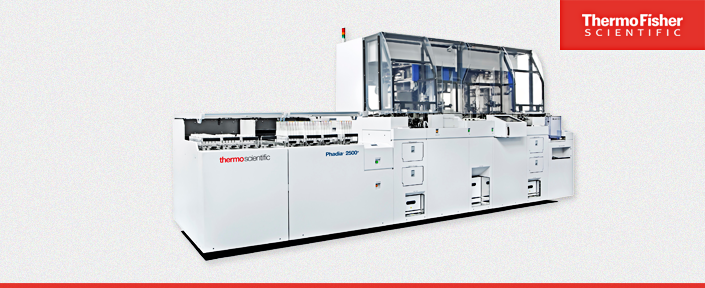A general marker for cellular immune system activation
An increase in Neopterin concentration marks the onset of an infection in the body before antibodies are present. As soon as the immune system is triggered by interferon-γ, Neopterin is released by macrophages (Figure 1).

EARLY DETECTION OF CELL IMMUNE REACTION
Elevated Neopterin can be measured and is useful as¹:
- Aid for early diagnosis of viral infections (e.g. SARS-CoV-2, HIV).
- Differential diagnosis between viral and bacterial infections.
- Autoimmune diseases (Sjörgren-syndrome, rheumatic diseases).
- Early indication of complications in allograft rejection episodes.
- Follow-up control of chronic infections, therapy and treatment.
- The IBL International Neopterin ELISA is calibrated against the HPLC reference method. This calibration against external standards gives IBL products an extraordinarily high accuracy and precision from lot to lot.
Insights from Neopterin about the pathology of SARS-CoV-2
Synthesised upon stimulation of macrophages and dendritic cells, Neopterin is an early, well-characterised biochemical marker of an ongoing immune reaction to viral infection (Figure 2).² There is evidence that Neopterin levels correlate with severity of COVID-19 progression and may be prognostic in COVID-19 patients.3–4 The Neopterin ELISA kit sensitively detects Neopterin before clinical symptoms of infection and thus, may be a tool to support an early recognition of SARS-CoV-2 infection.
Explore the benefits of early detection of cell immune reactions with IBL Neopterin ELISA
THESE PRODUCTS ARE NOT AVAILABLE FOR PURCHASE BY THE GENERAL PUBLIC.
Request a Quote








